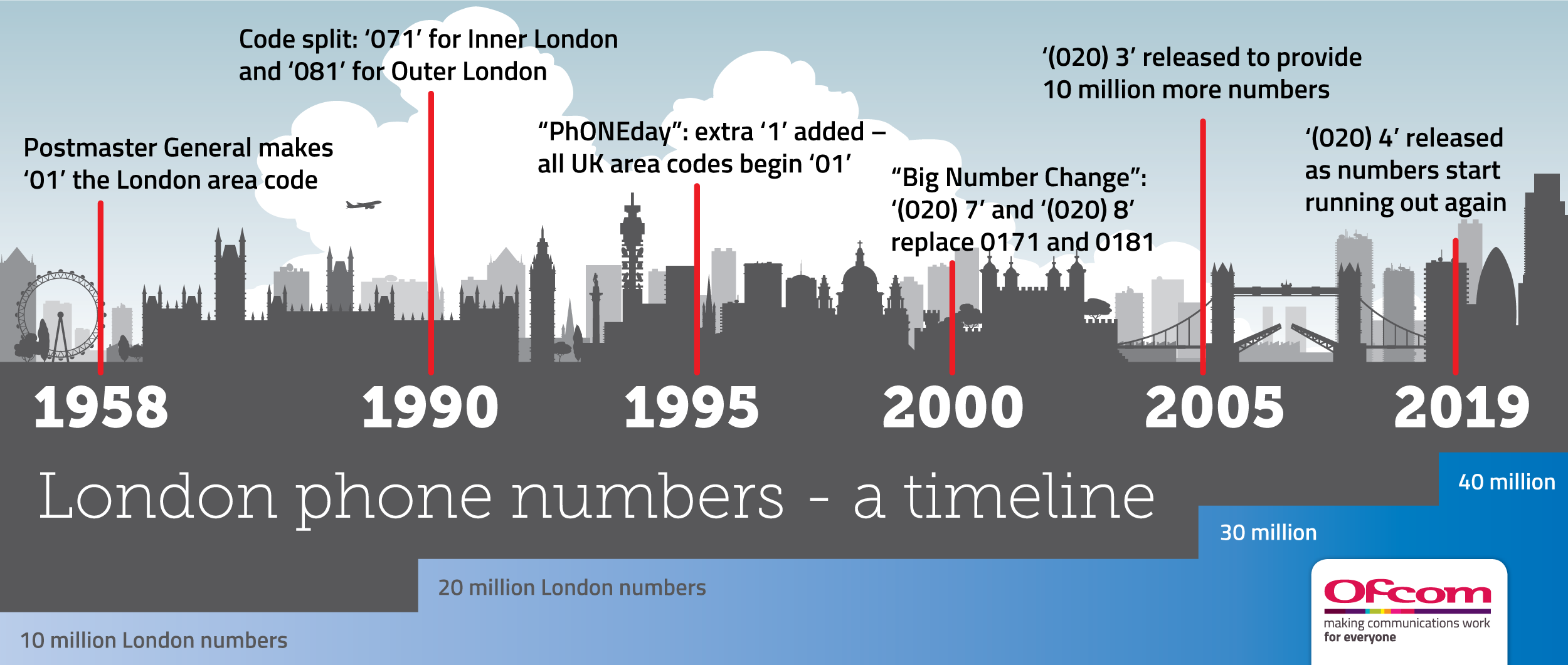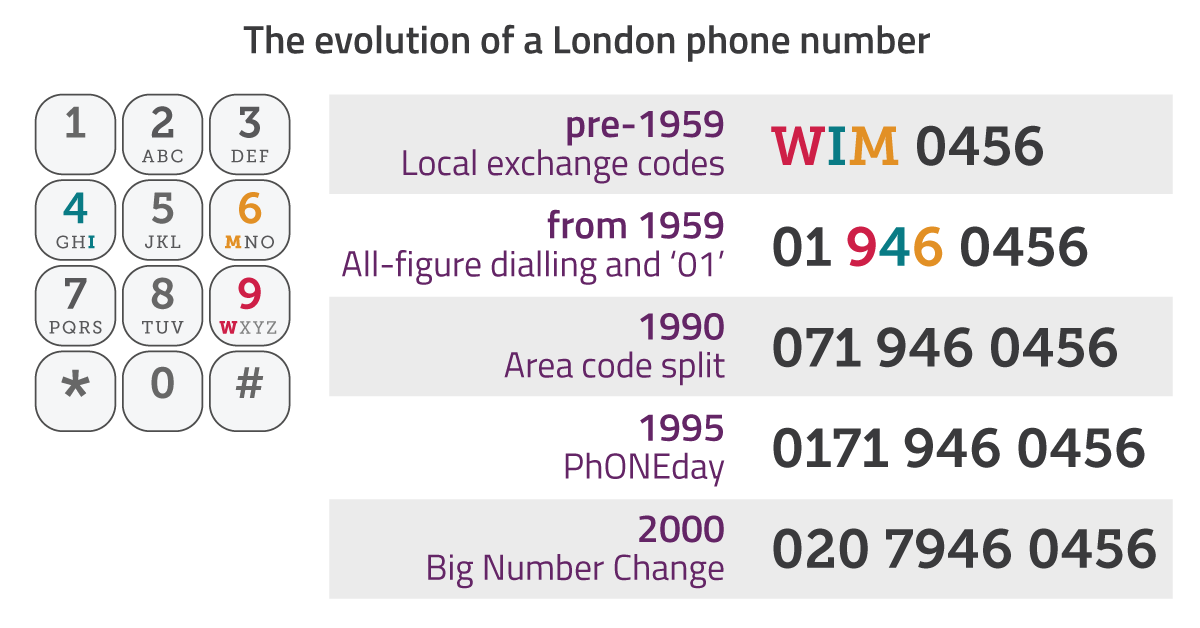Ofcom
|
|
London calling: Ofcom to release new '(020) 4' phone numbers
London will gain 10 million more landline phone numbers later this year, as Ofcom introduces a new ‘(020) 4’ range to keep the capital connected.
- 10 million new London phone numbers to be made available this year
- Current numbers set to run out within a year as the capital expands
As London expands and new homes and offices are built, there is increasing demand for new phone numbers. The capital, whose dialling code is 020, currently has 30 million phone numbers allocated across the existing (020) 3, 7 and 8 ranges.
But fewer than a million of these are left to be handed out to phone companies, and those will be used up within a year – as Ofcom distributes 30,000 London numbers each week.
UK customers still spend 44 billion minutes making landline calls every year. And although usage is declining, most home broadband connections rely on a landline which needs a number. So Ofcom is introducing a new number range for London to meet demand.[1]
New London numbers
Ofcom allocates numbers for phone companies to provide services to their customers. We will begin releasing blocks of ‘(020) 4’ numbers to telecoms providers in the autumn. Providers will then be able to start issuing these to customers by the end of the year.
We’re seeing growing need for 020 numbers, as London expands and new homes and offices are built. These 10 million new numbers will allow us to meet demand and help keep the capital connected.Liz Greenberg, Head of Numbering at Ofcom
History of London numbers
London’s area code has changed several times over the years.
In 1958 the city was allocated the single code 01, which remained until 1990 when it was replaced by two codes – 071 for inner London numbers, and 081 for outer London. Five years later, all UK area codes gained a ‘1’ after the ‘0’ to make it clear it was a landline number, and the capital’s codes changed to 0171 and 0181.
In 2000, the UK’s phone numbers were reorganised through the “Big Number Change”. London was given a single area code once again – 020 – and the inner and outer London divide was removed.
But five years later, Ofcom researched uncovered a widespread misconception among Londoners that the city still had two area codes – 0207 and 0208. Only 13% of people, without prompting, correctly identified 020 as being London’s single area code.[2]

How phone numbers evolved
In the early days of telephone calls, operators manually put callers through to each other. Phone numbers were designated based on the name of the local telephone exchange.
The first three letters of the exchange name were converted to the corresponding digits on the telephone dial. For example, you might have rung the operator and asked for “WIMbledon 0456”, which would have been converted to 946 0456.
So there are still clues to the origins of certain phone numbers. Today, that number would be 020 7946 0456.

Next steps
Ofcom will start accepting applications for ‘(020) 4’ numbers from telecoms companies from 1 October, and we expect the new numbers to start being allocated to customers from December 2019.
Notes to Editors
- We allocate numbers to providers in blocks of 10,000.
- 2005 Ofcom research report on London telephone numbers (PDF, 76.1 KB), carried out after the announcement of new ‘(020) 3’ numbers, but before their release. See paragraph 3.2 for detail on understanding.
Original article link: https://www.ofcom.org.uk/about-ofcom/latest/media/media-releases/2019/new-020-4-phone-numbers
.gif)

